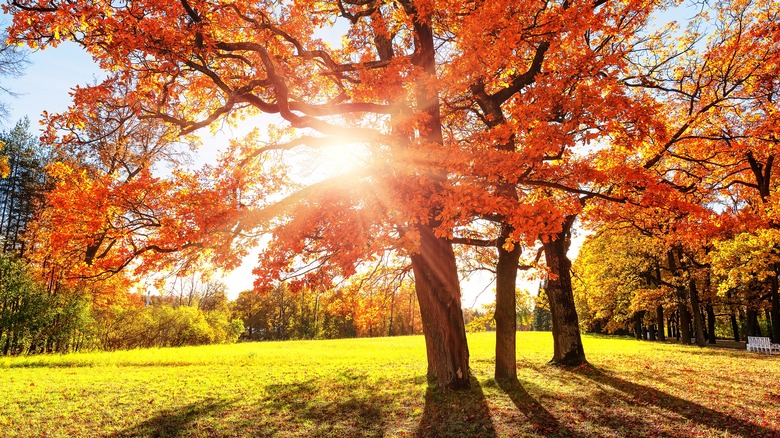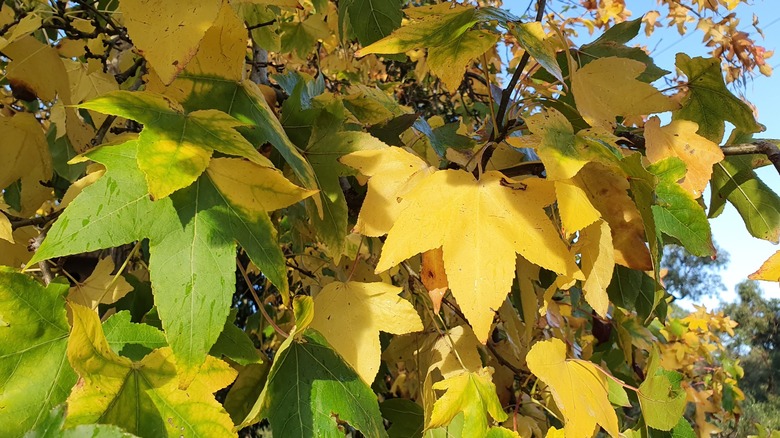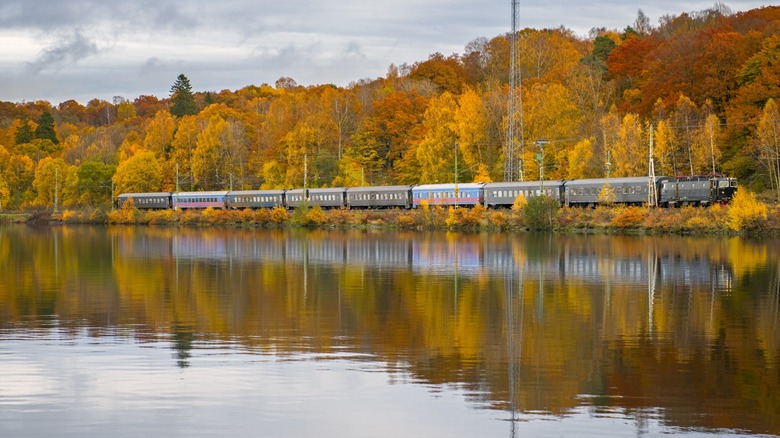Climate Change's Upsetting Impacts On Fall Foliage Viewing
As summertime sunshine gives way to the cool, windy breaths of autumn, many around the country look forward to the colorful shades of the leaves changing on the trees and falling to crinkle underfoot. The hunt for the most colorful city of trees, awash in bright hues, is a favorite pastime of fall foliage seekers looking for the nation's best places to see fall colors. But things are changing.
"If climate change is going to mean significant drought, that means trees are going to shut down ... Severe droughts, that really means that the tree just can't function –- that doesn't improve color," U.S. Forest Service Research Plant Physiologist Paul Schaberg told the Associated Press.
In Acadia National Park, which traditionally contains beautiful hikes for viewing fall foliage, park visitors have been asked to contribute to climate change research. Stephanie Spera, an assistant professor of Geography, Environment, and Sustainability at the University of Richmond, spearheaded a 2022 project to understand the relationship between changing weather and fall foliage in the park. Her findings were reported in the scientific journal Landscape Ecology. She found that warmer temperatures, including warmer nights, and downpour precipitation in September and May have resulted in peak foliage occurring two weeks later than it did in 1950. By 2060, she projects, peak foliage will be pushed back to October 30 through November 2.
Fractured fall foliage may be a sign of sick trees
When temperatures cool in autumn and the days get shorter, it's an environmental signal for trees to stop making chlorophyll, the substance that makes leaves green and helps them grow. When less sunlight and cooler temperatures signal the tree to chill out on chlorophyll production, the natural yellows, reds, and browns lying dormant come alive on the leaf, signaling the tree is absorbing its last gasps of green-leaf energy before going into hibernation mode. When dry summers dull the growing season and temperatures don't cool as expected, the trees keep attempting to make chlorophyll even though the shortened days mean they have less sunlight with which to make it. The tree doesn't know to absorb those nutrients before the leaves die and fall during a cold snap.
Not only is peak foliage happening later, but the season is also getting shorter. Coupled with warmer days, less summer rainfall means the tree's growing season isn't as strong, and the underlying leaf colors of red, yellow, and brown aren't as bright. Think of it as seasonal affective disorder for trees. Even more worrying are the cumulative effects of weaker tree growth. Trees absorb 30% of carbon emissions every year, so if consistent drought, extreme weather, and toxic insect infestations lead to the collapse of forest ecosystems, our planet's most effective natural carbon capture method could vanish.
As leaf peeping changes, you can too
As travelers concerned about the climate, whether we're viewing fall foliage or weighing the ethics of visiting the sinking city of Venice, it is important to be aware of how we can be better travelers. Air travel, especially to relatively nearby destinations, produces the most carbon. European think tank EnviroSustain calculates that slow travel, traveling by rail or boat to nearby destinations, can cut emissions by 48% per traveler. If you're visiting a charming East Coast destination to view great fall foliage, you can probably get there by an Amtrak route like the popular Acela or Northeast Regional trains.
And when traveling in a group, even car trips are more sustainable than air travel. But beyond your actual method of travel, there are many ways to reduce your climate impact while getting the best and brightest out of fall colors. Think about banishing single-use plastics, like water bottles and restaurant takeaway containers. Remember to turn your electronics, air conditioning, and heating off when you leave the hotel room –- and, if possible, avoid excessive heating and cooling. As our travel destinations continue to reveal the effects of climate change, it's good to remind ourselves that we can change our habits, too –- for the better.


